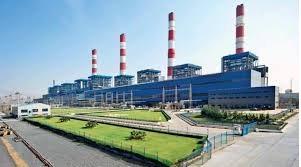
Kutch Copper, a subsidiary of Adani Enterprises Limited,
commissioned the first unit of its greenfield copper refinery project at Mundra
on Thursday by dispatching the maiden batch of cathodes to customers.
This marks the Adani Portfolio’s debut in the metal industry. The
successful progress of the greenfield unit showcases the Adani Group's ability
to plan and execute largescale projects.
Adani Enterprises is investing nearly $1.2 billion to set up a
copper smelter with 0.5 MTPA capacity in the first phase. On completion of the
second phase that will add similar capacity, Kutch Copper, with 1 MTPA, will be
the world's largest single-location custom smelter, benchmarking ESG
performance standards while leveraging state-of-the-art technology and digitalisation.
It will create 2,000 direct and 5,000 indirect employment opportunities.
“With Kutch Copper
commencing operations, the Adani portfolio of companies is not only entering
the metals sector but also driving India's leap towards a sustainable and aatmanirbhar
(self-reliant) future,” said Mr Gautam Adani, Chairman of the Adani Group.
“Our speed of execution in this ambitious, super-sized project underscores our
commitment to take India to the forefront of the global copper sector. We
believe the domestic copper industry will play a crucial role in achieving our
nation’s goal of carbon neutrality by 2070 by strengthening our green
infrastructure hand in hand with mature environmental stewardship. When
commissioned, our modern smelter will set new benchmarks in copper production,
with an enhanced thrust on innovative green technology.”
The demand for copper will be driven by renewable energy,
electric vehicles, charging infrastructure, and the development of power
transmission and distribution networks.
Kutch Copper is working towards establishing Kutch Copper Tubes
Limited as part of its forward integration strategy to add copper tubes to its
portfolio. The tubes will cater to applications in air conditioning and
refrigeration.
The technology used by Kutch Copper is engineered to have the
lowest carbon footprint. One-third of the plant area has been designated
as green belt space, and 15% of the capital has been allocated towards
environmental protection. To minimise the ecological impact, the plant has
implemented a zero-liquid discharge model and uses desalinated water for
operations. It also recycles treated wastewater within processes to reduce
waste.